Stem Cell
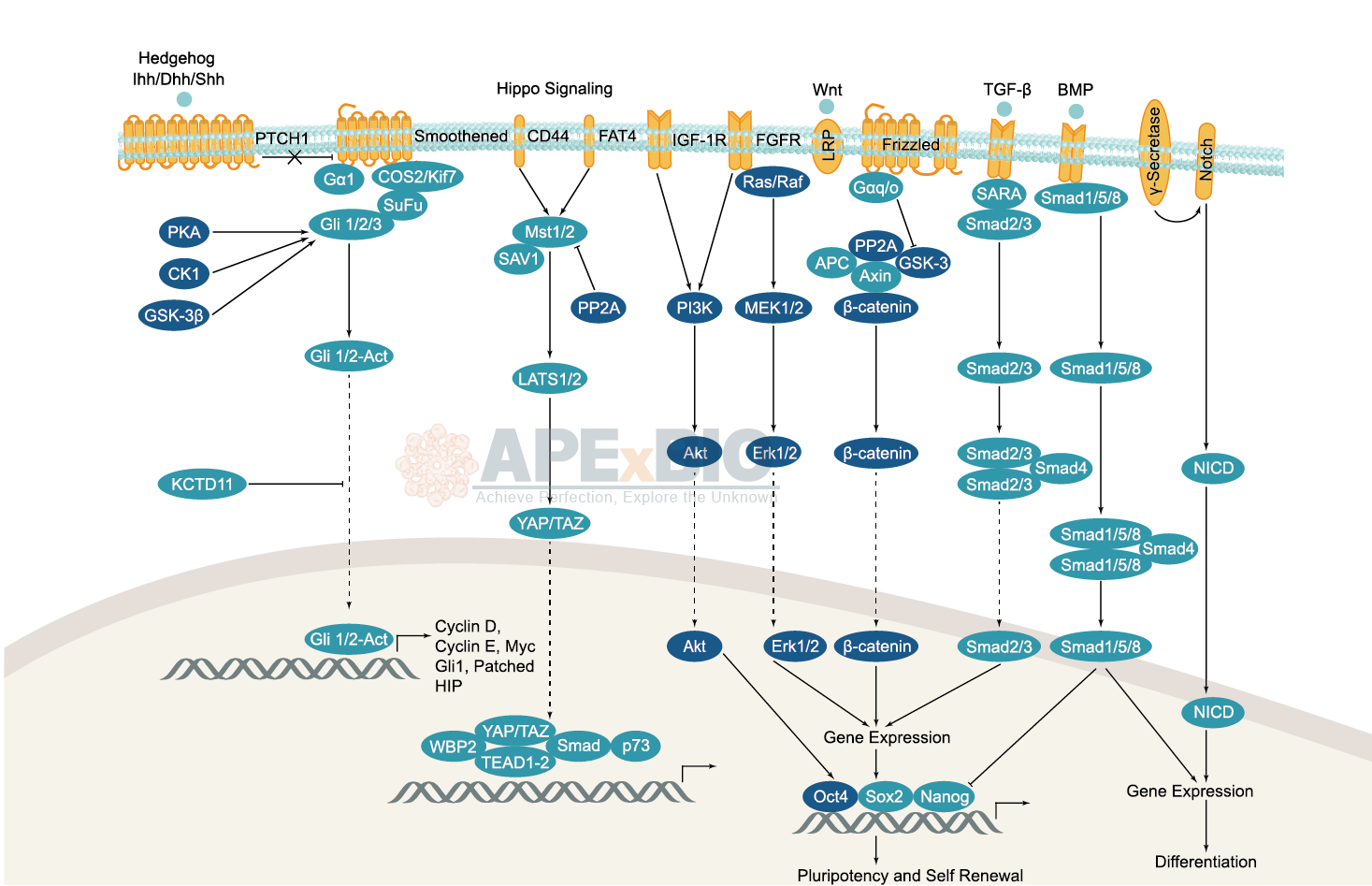

In ESC, BMP/TGF-β signaling pathway plays a key role in maintaining pluripotency and self-renewal. It signals through Smad proteins, and the FGF signaling pathway, which activates the MAPK and Akt pathways. The Wnt signaling pathway also promotes pluripotency. OCT-4, SOX2, and NANOG are three main transcription factors that are expressed and activated by these pathways. Induced pluripotent stem cells (iPSC) are pluripotent cells that can be generated from differentiated cells with forced expression of specific reprogramming factors. Both ESC and iPSC can be induced to develop into distinct cell types that associated with three primary germ layers: ectoderm, mesoderm and endoderm. Signaling pathways that control the development of these cell lineages, including BMP/TGF-β, Notch, Wnt/β-catenin, Hedgehog and Hippo pathways, which regulate cell division, growth and differentiation. Defects in stem cell signaling are related to developmental disorders and cancer.
-
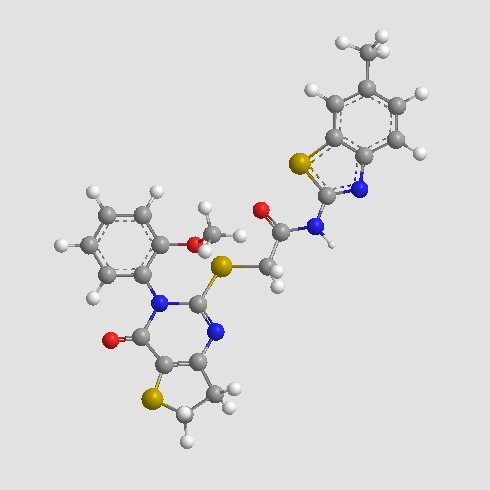 B4922 IWP 4Summary: A potent inhibitor of Wnt production
B4922 IWP 4Summary: A potent inhibitor of Wnt production -
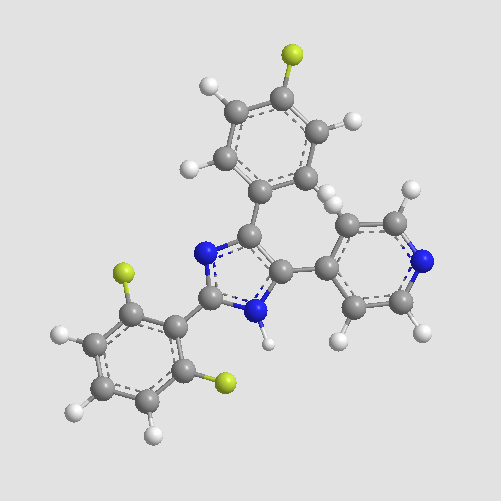 B4923 TA 01Summary: CK1ε, CK1δ,and p38α inhibitor
B4923 TA 01Summary: CK1ε, CK1δ,and p38α inhibitor -
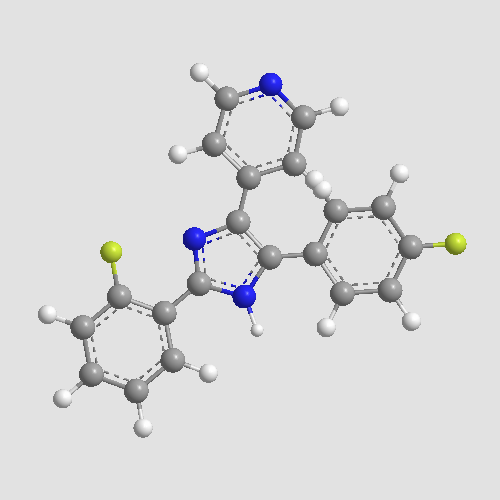 B4924 TA 02Summary: p38 MAPK inhibitor
B4924 TA 02Summary: p38 MAPK inhibitor -
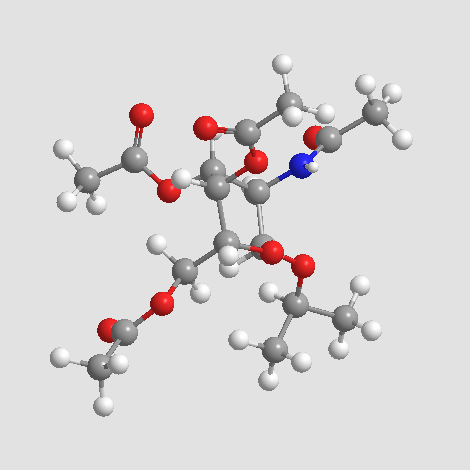 B4925 C34Summary: TLR4 inhibitor
B4925 C34Summary: TLR4 inhibitor -
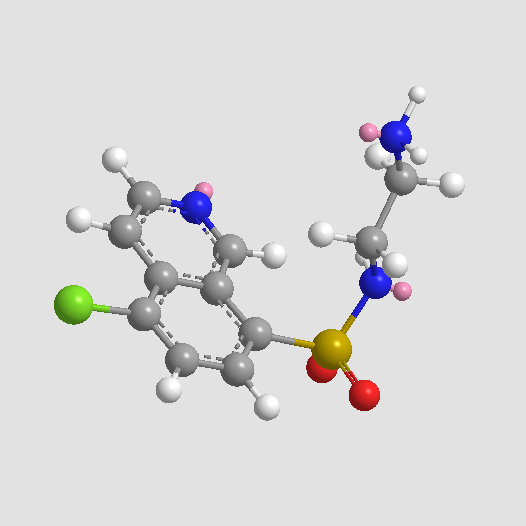 B4936 CKI 7 dihydrochloride1 CitationSummary: Casein kinase 1 (CK1) inhibitor
B4936 CKI 7 dihydrochloride1 CitationSummary: Casein kinase 1 (CK1) inhibitor -
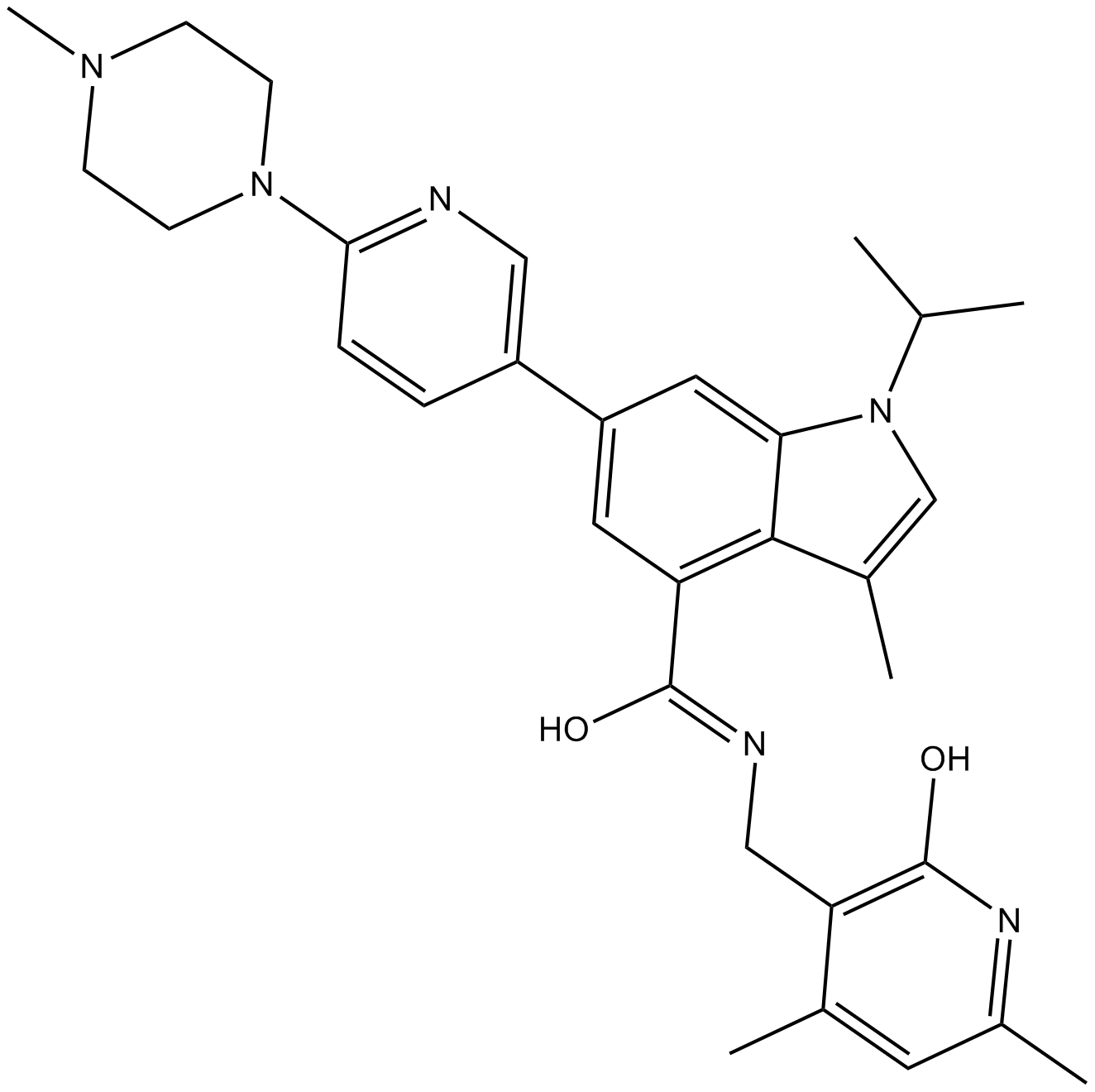 B5833 GSK5032 CitationSummary: EZH2 inhibitor
B5833 GSK5032 CitationSummary: EZH2 inhibitor -
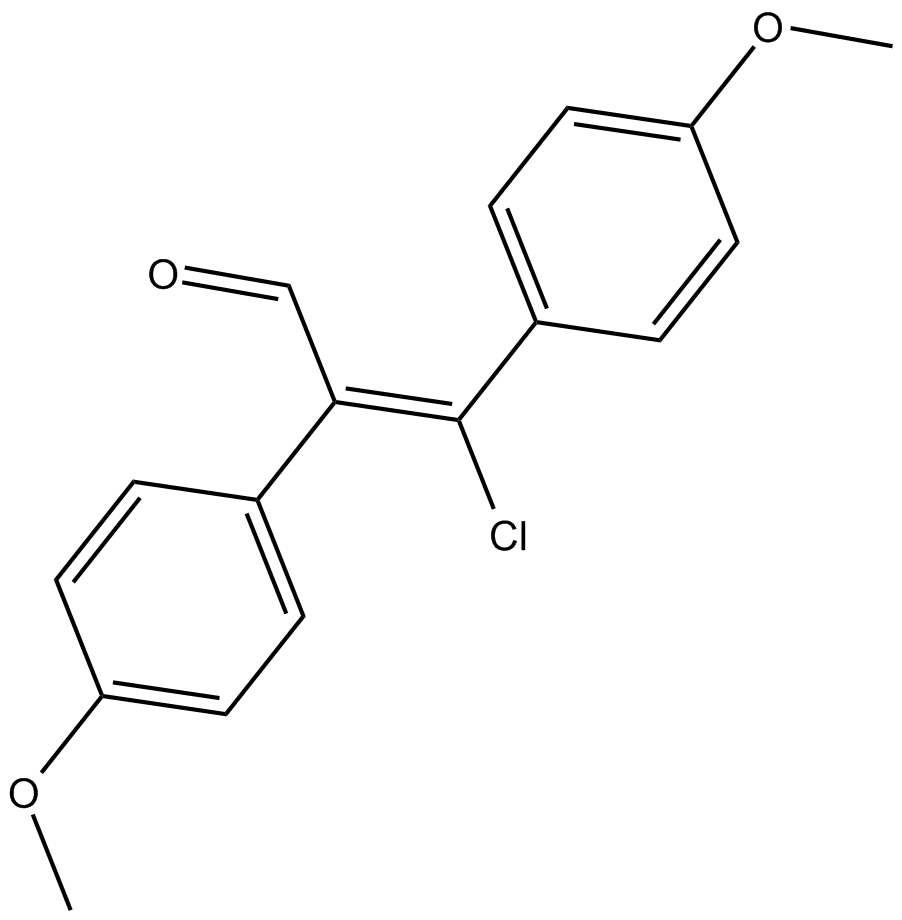 B5977 WindorphenSummary: Wnt inhibitor
B5977 WindorphenSummary: Wnt inhibitor -
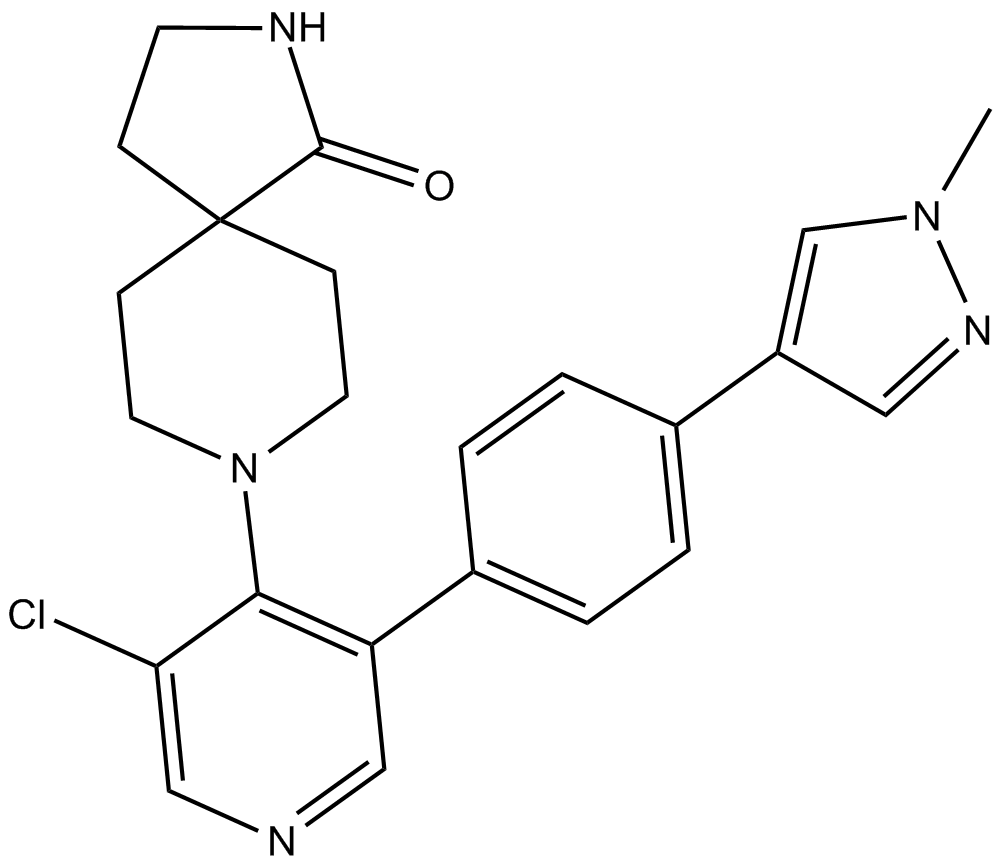 B5979 CCT251545Summary: Orally bioavailable and potent WNT signaling inhibitor
B5979 CCT251545Summary: Orally bioavailable and potent WNT signaling inhibitor -
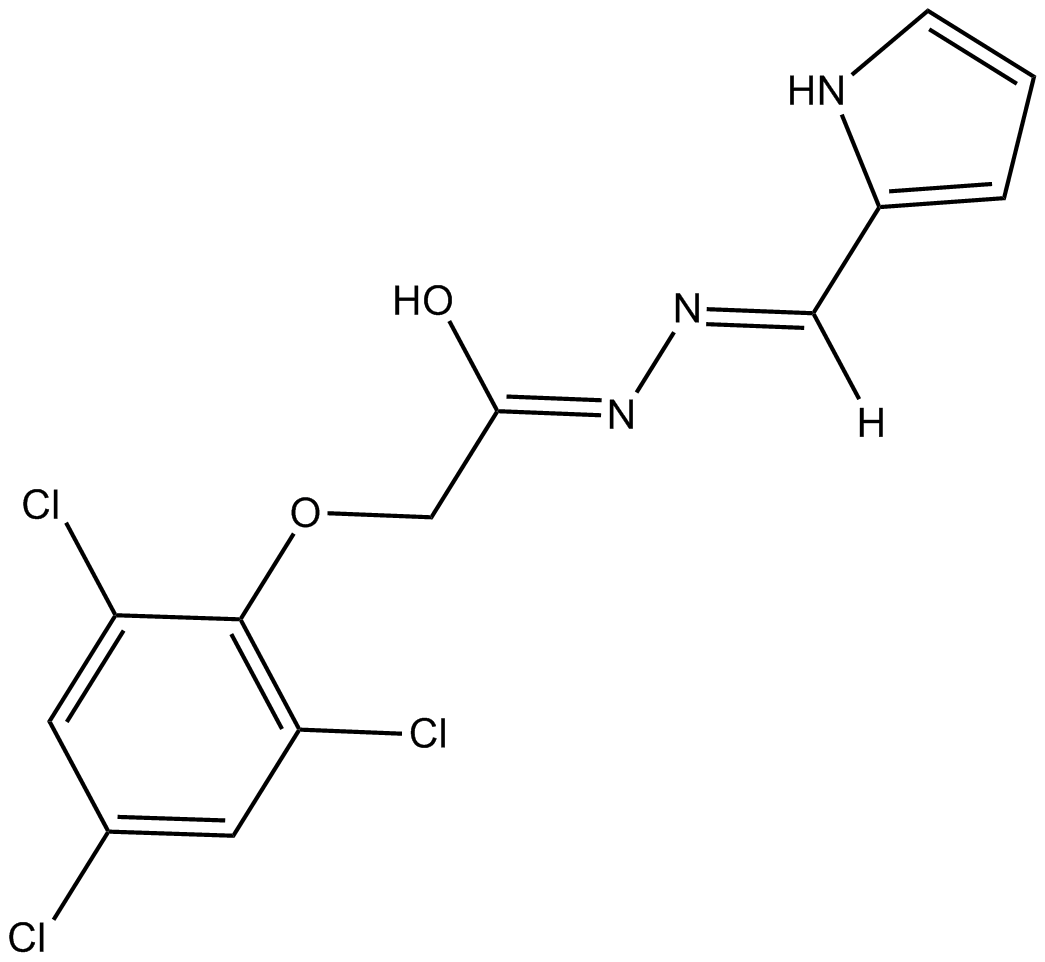 A8719 ML 239Summary: inhibitor of the breast cancer stem cells
A8719 ML 239Summary: inhibitor of the breast cancer stem cells -
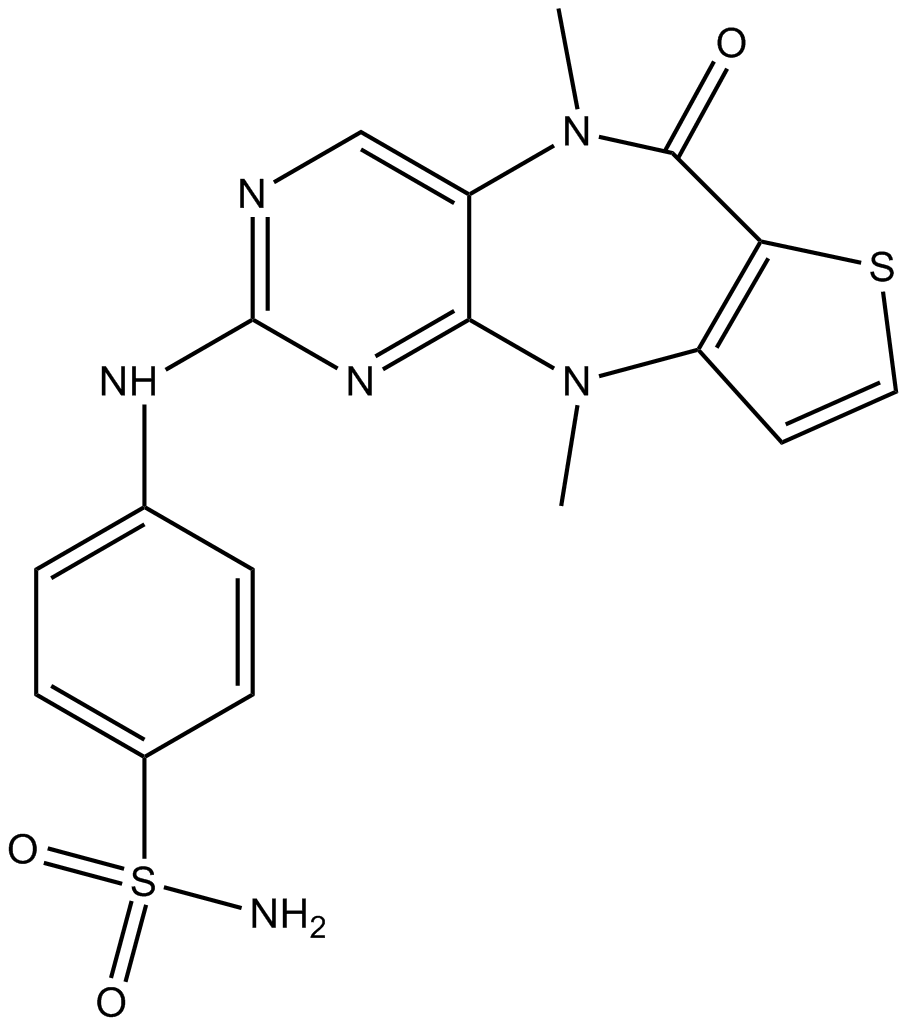 A8735 XMU-MP-12 CitationTarget: MSTSummary: MST1/2 inhibitor, potent and selective
A8735 XMU-MP-12 CitationTarget: MSTSummary: MST1/2 inhibitor, potent and selective


